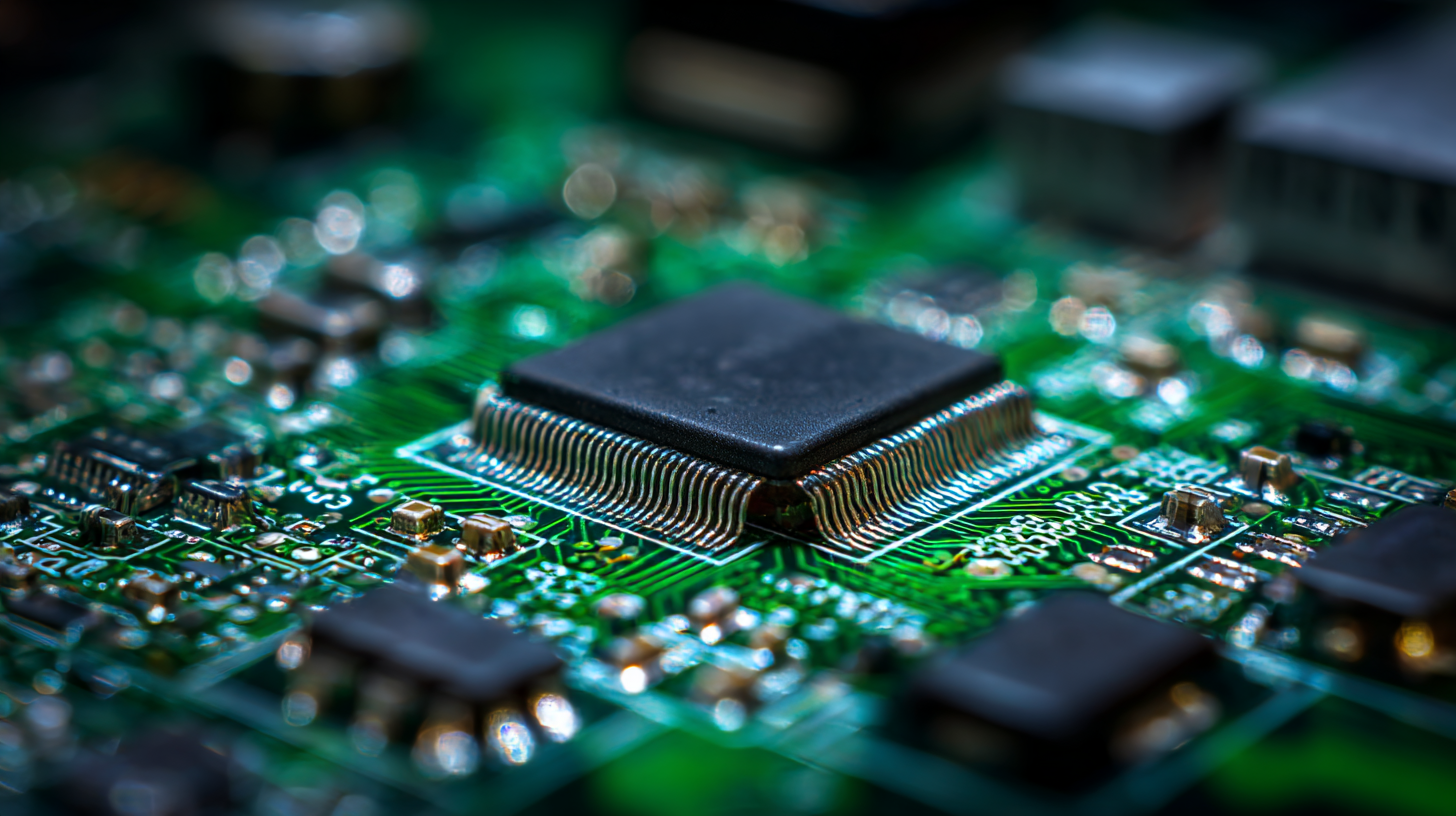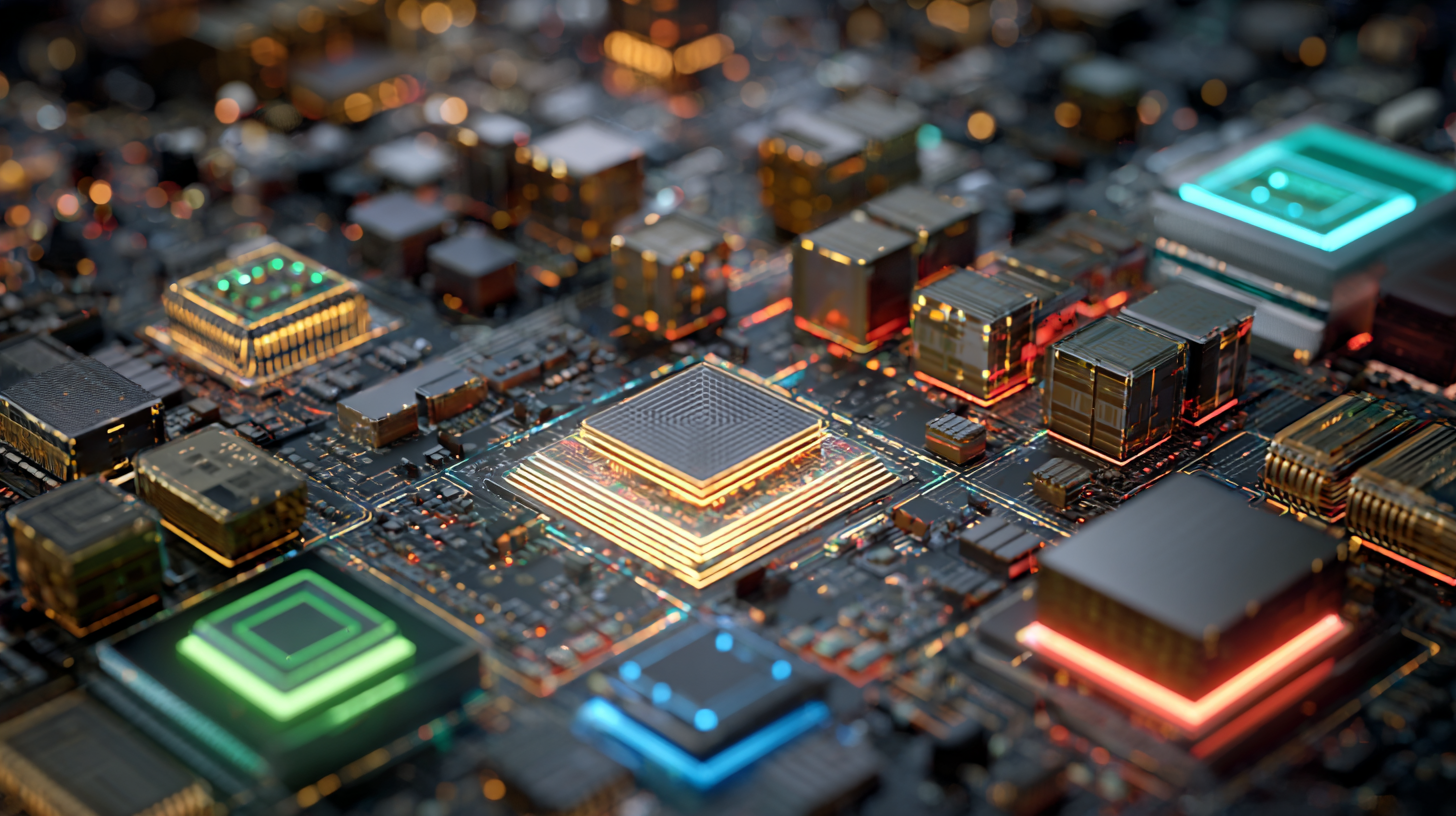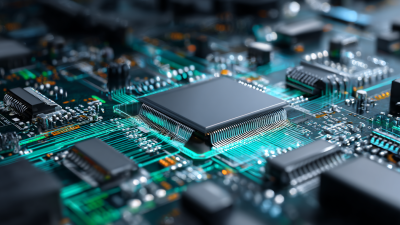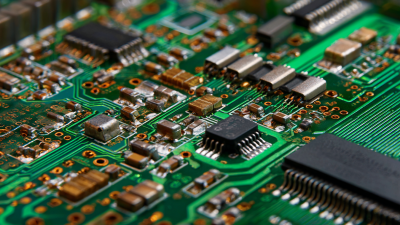How Printed Circuit Boards Shape the Future of Technology with Insights from Industry Trends
As we navigate the rapidly evolving landscape of technology, printed circuit boards (PCBs) emerge as a pivotal element driving innovation across various sectors. According to recent market research, the global PCB market is projected to reach USD 104.6 billion by 2025, growing at a CAGR of 3.2% from 2020. This growth is propelled by the increasing demand for consumer electronics, automotive applications, and advancements in telecommunications. Industry insights reveal that the integration of smart technologies and IoT devices relies heavily on the capabilities of PCBs, which are not only essential for electrical connectivity but also for enhancing device functionality and efficiency. As we explore the trends shaping the future, from flexible PCBs to eco-friendly materials, it is evident that these components are at the forefront of technological advancement, embodying the convergence of innovation and sustainability in the industry.

The Evolution of Printed Circuit Boards in Modern Electronics
The evolution of printed circuit boards (PCBs) has been pivotal in shaping modern electronics, significantly impacting various sectors including consumer electronics, automotive, and industrial manufacturing. With the market for PCBs expected to reach approximately $75 billion by 2025, driven by the increasing demand for compact and efficient electronic devices, the importance of innovative PCB design has never been more critical. Advanced materials and manufacturing processes, such as flexible PCBs and high-density interconnect (HDI) technology, are allowing for more complex circuit designs while reducing the overall footprint of devices.
As industries progress towards miniaturization and enhanced functionality, the adoption of multi-layered PCBs has surged. According to a recent study by the IPC, multi-layer PCB production has shown a notable growth rate of around 6% annually. This trend is particularly evident in the telecommunications and medical device sectors, where the need for reliability and performance is paramount. Moreover, the integration of smart technologies, such as IoT and AI, necessitates PCBs that can support higher performance levels, thereby pushing manufacturers to innovate continually. The embrace of sustainable materials and processes in PCB manufacturing further reflects the industry's commitment to not only advancing technology but also addressing environmental concerns.
How Printed Circuit Boards Shape the Future of Technology with Insights from Industry Trends - The Evolution of Printed Circuit Boards in Modern Electronics
| Year | PCB Type | Material | Applications | Trends |
|---|---|---|---|---|
| 2020 | Flexible PCB | Polyimide | Wearable Technology | Miniaturization |
| 2021 | High-Frequency PCB | Teflon | Telecommunications | 5G Integration |
| 2022 | Multilayer PCB | FR-4 | Consumer Electronics | Sustainability |
| 2023 | Rigid-Flex PCB | Polyester | Aerospace | Advanced Connectivity |
Impact of PCB Innovations on Emerging Technologies
The evolution of Printed Circuit Boards (PCBs) is pivotal in shaping innovations across various technology sectors. As the backbone of electronic devices, PCBs are constantly being refined to support increasingly complex circuits and higher performance standards. Recent trends indicate a shift towards flexible and high-density interconnection technologies, enabling the miniaturization of devices and unlocking potential in fields such as wearables, IoT, and autonomous systems. Innovations like embedded components and advanced materials are paving the way for more efficient designs that can meet the demands of next-generation technology.
**Tips:** When selecting a PCB for your project, consider the long-term scalability of your design. Opt for materials that not only meet current thermal and electrical needs but also allow for future modifications. Additionally, pay attention to the PCB manufacturer’s capabilities in handling advanced technologies, as this can significantly impact the performance of your final product.
Emerging technologies such as 5G communication and electric vehicles heavily rely on advanced PCB design. As the demand for higher bandwidth and seamless connectivity grows, the role of PCBs in facilitating this communication becomes increasingly critical. Integrating smart features like built-in sensors and self-diagnostic capabilities into PCBs could dramatically change how we interact with technology.
**Tips:** Collaborate closely with your PCB designer from the outset to ensure that the layout is optimized for performance. Utilizing simulation tools can help predict how design changes will affect functionality, leading to a more robust end product.

Sustainability Trends in PCB Manufacturing Processes
The printed circuit board (PCB) industry is undergoing a significant transformation, increasingly focusing on sustainability within its manufacturing processes. According to a report by IPC, the global electronic waste generated in 2020 surpassed 53.6 million metric tons, highlighting the urgent need for eco-friendly solutions. In response, many PCB manufacturers are now adopting more sustainable practices, such as utilizing biodegradable materials and reducing hazardous substances through the implementation of stricter regulations.
Recent trends indicate that the market for green PCBs is expanding. A study from Research and Markets predicted the global green PCB market would grow at a compound annual growth rate (CAGR) of 11.2% from 2021 to 2026. This shift reflects a broader industry commitment to sustainability, with companies investing in technologies that minimize carbon footprints and enhance recyclability. Furthermore, the use of water-based inks and lead-free soldering processes is becoming standard, significantly reducing environmental impacts while maintaining performance standards essential for modern electronic devices.
How Printed Circuit Boards Shape the Future of Technology: Sustainability Trends in PCB Manufacturing
This chart illustrates the percentage of PCB manufacturers adopting various sustainability practices in their processes over recent years, highlighting the increasing trend towards environmentally friendly manufacturing.
Industry Standards and Future Directions for PCB Design
The landscape of printed circuit board (PCB) design is evolving rapidly, driven by industry standards and emerging technologies. With advancements pushing towards Industry 5.0, the emphasis on sustainable and efficient manufacturing processes is more pronounced than ever.
The automotive PCB market exemplifies this trend, projected to grow significantly, highlighting the increasing need for high-performance, reliable electronic components in vehicles. As industries strive for automation and connectivity, PCBs are at the heart of innovations enhancing productivity and reducing downtime.
Additionally, new trends in electronics manufacturing focus on collaboration within the industry, as seen in recent tech summits that aim to establish higher standards for PCB design and production. Startups in the sector are also making strides with innovative approaches and solutions that cater to both established markets and niche applications.
As companies adapt to these shifts, they align with the future directions of PCB design, ensuring their products are not only competitive but also pivotal in driving technological advancements across various fields.
Integration of Advanced Materials in PCB Fabrication
The integration of advanced materials in printed circuit board (PCB) fabrication is revolutionizing the technology landscape. Traditional materials such as FR4 are increasingly being supplemented or replaced by high-performance alternatives like polyimide and ceramic composites. These materials are designed to withstand extreme conditions and high frequencies, which are essential for the growing demand for reliable and efficient electronic devices. As industries like telecommunications and automotive electronics evolve, the need for PCBs that can maintain performance while reducing weight and size is paramount.
Moreover, the shift towards sustainability has prompted PCB manufacturers to explore eco-friendly materials and manufacturing processes. Biodegradable substrates and recycled components are becoming more prevalent, aligning with global efforts to reduce electronic waste and promote green technology. The incorporation of innovative materials not only enhances the lifespan and functionality of PCBs but also supports the development of more environmentally conscious products. As these trends continue to shape the industry, the future of PCB technology appears brighter, promising smarter, faster, and more sustainable solutions for the electronic devices of tomorrow.



